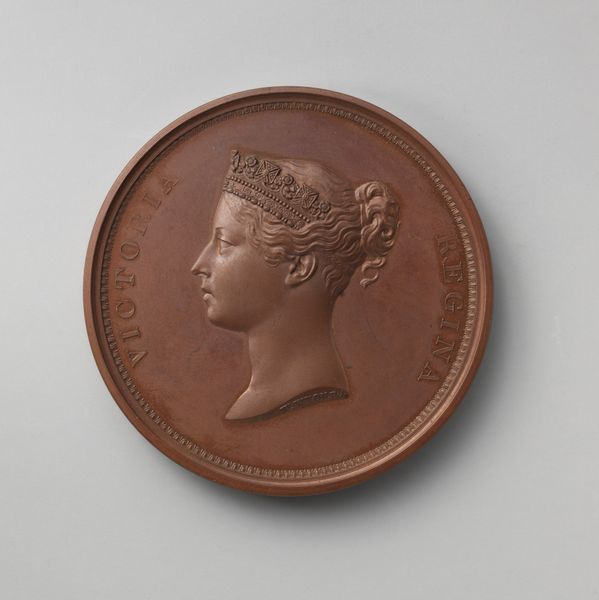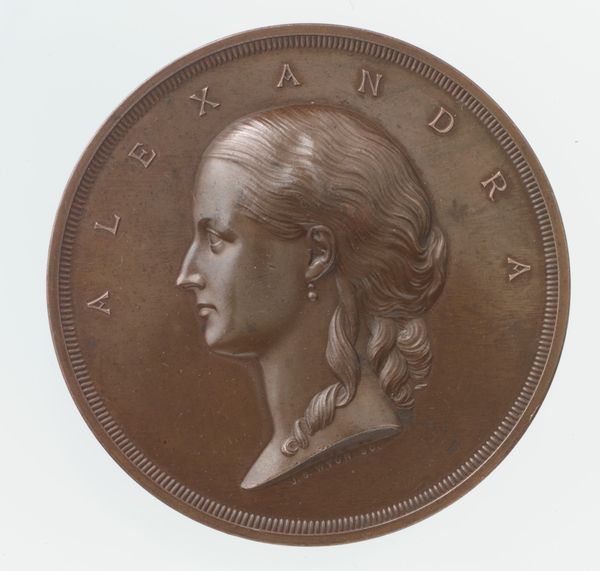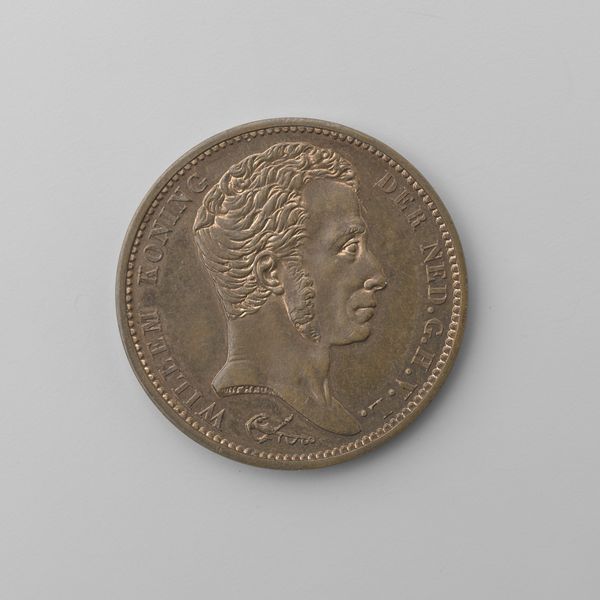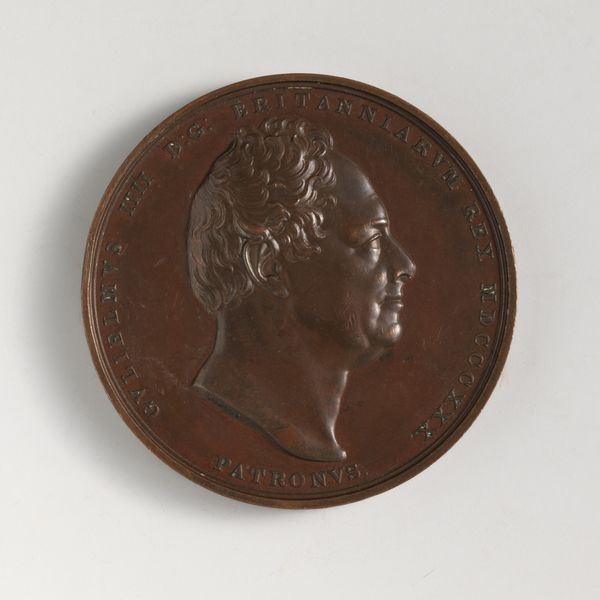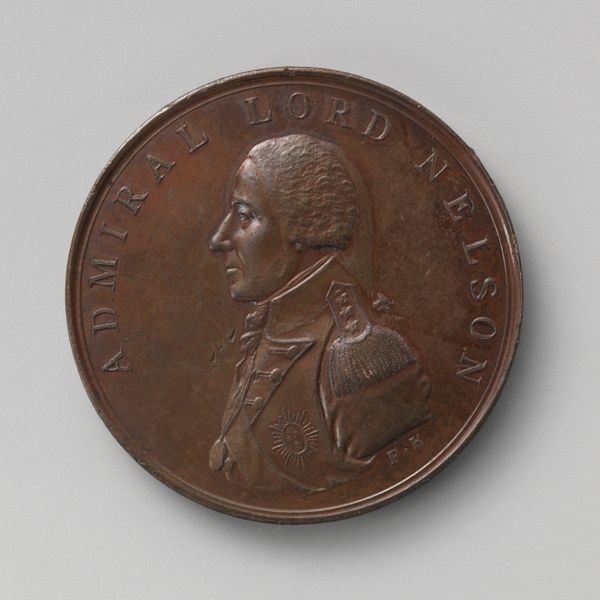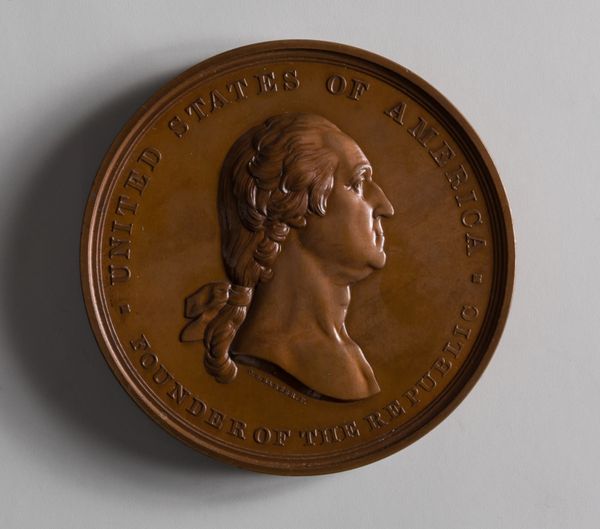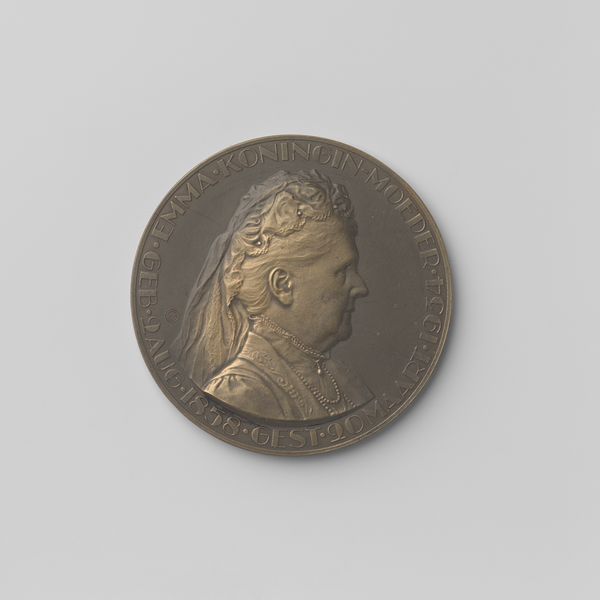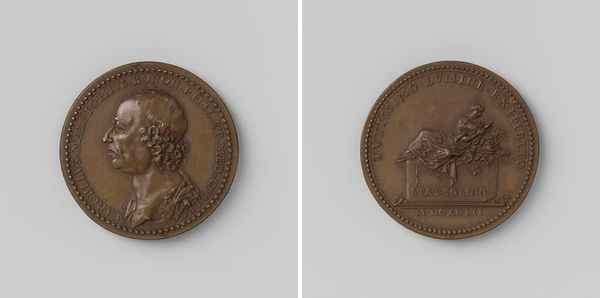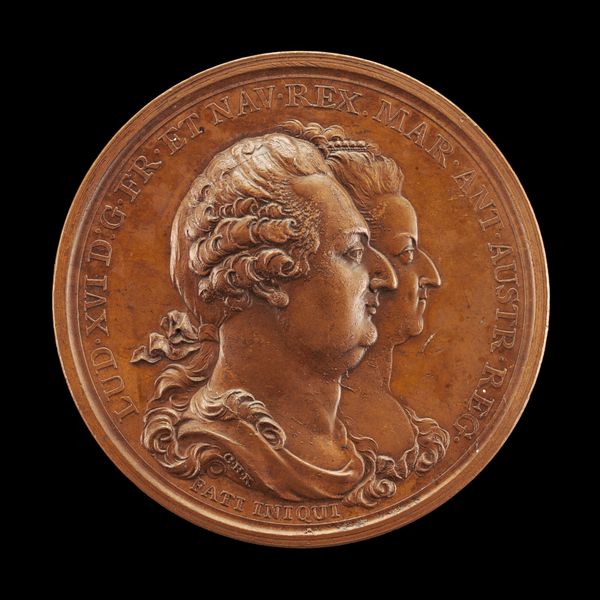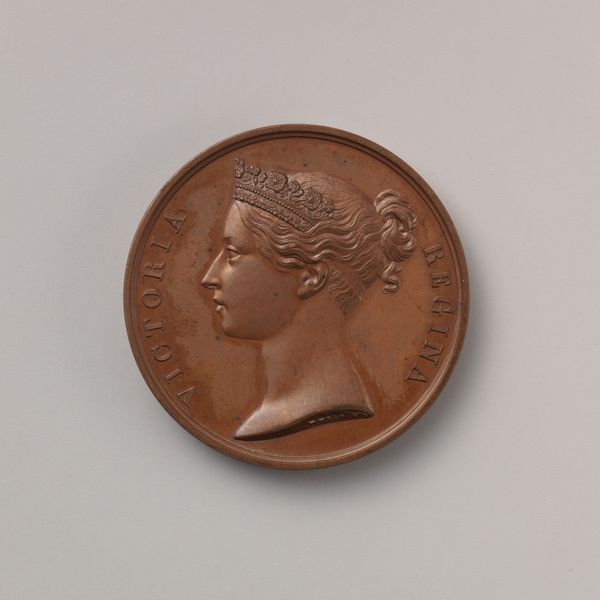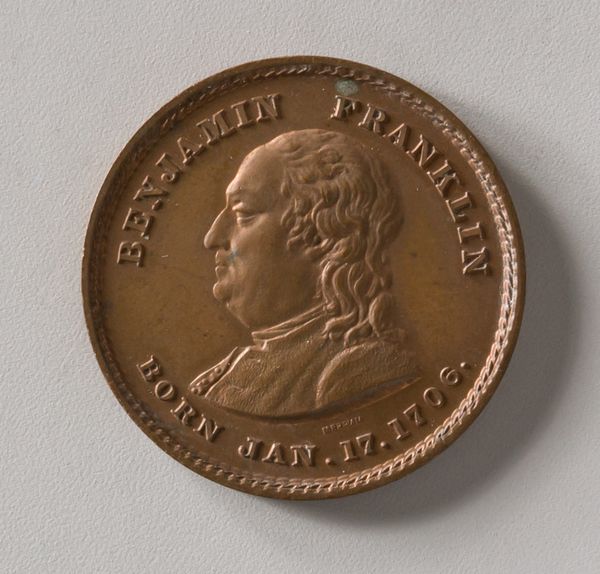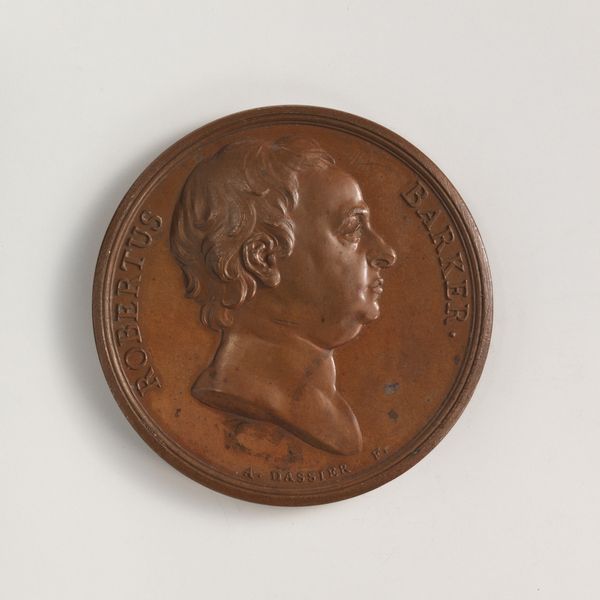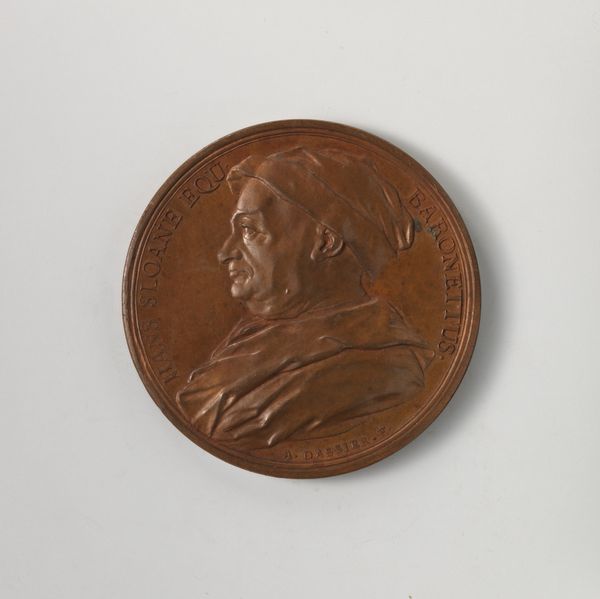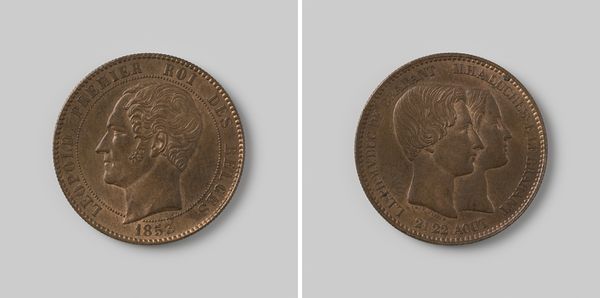
bronze, sculpture
#
medal
#
classical-realism
#
bronze
#
sculpture
#
history-painting
#
decorative-art
#
profile
Dimensions: Diameter: 2 1/2 in. (64 mm)
Copyright: Public Domain
Curator: This is the Jurors' Medal from the Great Exhibition of 1851, crafted by William Wyon in bronze. What's your initial take on this piece? Editor: It strikes me as… severe. A profile portrait is always rather formal, but the bronze lends a particular weightiness. I wonder if the solemnity accurately reflects the mood surrounding the Exhibition. Curator: It’s more complicated than that. The Great Exhibition was intended to showcase British ingenuity, and the aesthetic here projects authority through the classical realism typical of profile imagery. Notice the sharp detail – the crispness of their hair, the line of their noses. The composition places Victoria and Albert close, almost merging, which semiotically suggests a unified British Empire. Editor: That may be true, but it's also important to understand how the royal couple engaged with art. This wasn’t simply a state event; Victoria and Albert very consciously shaped their image through the cultural products of the time. They actively curated their legacy, as we all do. A medal such as this isn’t just about aesthetic authority, it's about the political power that profile imagery has commanded throughout centuries. The Great Exhibition was largely Prince Albert's idea, intended as a moment of immense self-promotion. Curator: Indeed, the choice of bronze, rather than gold or silver, also suggests accessibility. The medal would have circulated relatively widely, reinforcing the visibility of the monarchy to a broader audience. It also represents power. In 1851 bronze would call upon the history of Roman authority, drawing parallels that reinforced British national pride through the medium. Editor: This makes me wonder about its role today. Now, this is housed in the Metropolitan Museum. Its purpose has fundamentally changed. It is not really about propagating authority, it has now become a historical relic that art audiences interpret and analyze as a kind of artwork in and of itself. How do you view it through that modern lens? Curator: It’s interesting you frame it that way. Viewing it now, apart from the social and political forces behind its making, it possesses a compelling structure: the round format containing a carefully organized arrangement of text and figures, balanced with minute precision. This composition is itself worthy of our attention. Editor: Precisely! Considering both perspectives, this medal speaks volumes about a particular moment in history. It shows the monarchy, the country, its relationship to itself. Curator: Indeed, and that complex meaning is cleverly articulated through visual form.
Comments
No comments
Be the first to comment and join the conversation on the ultimate creative platform.
